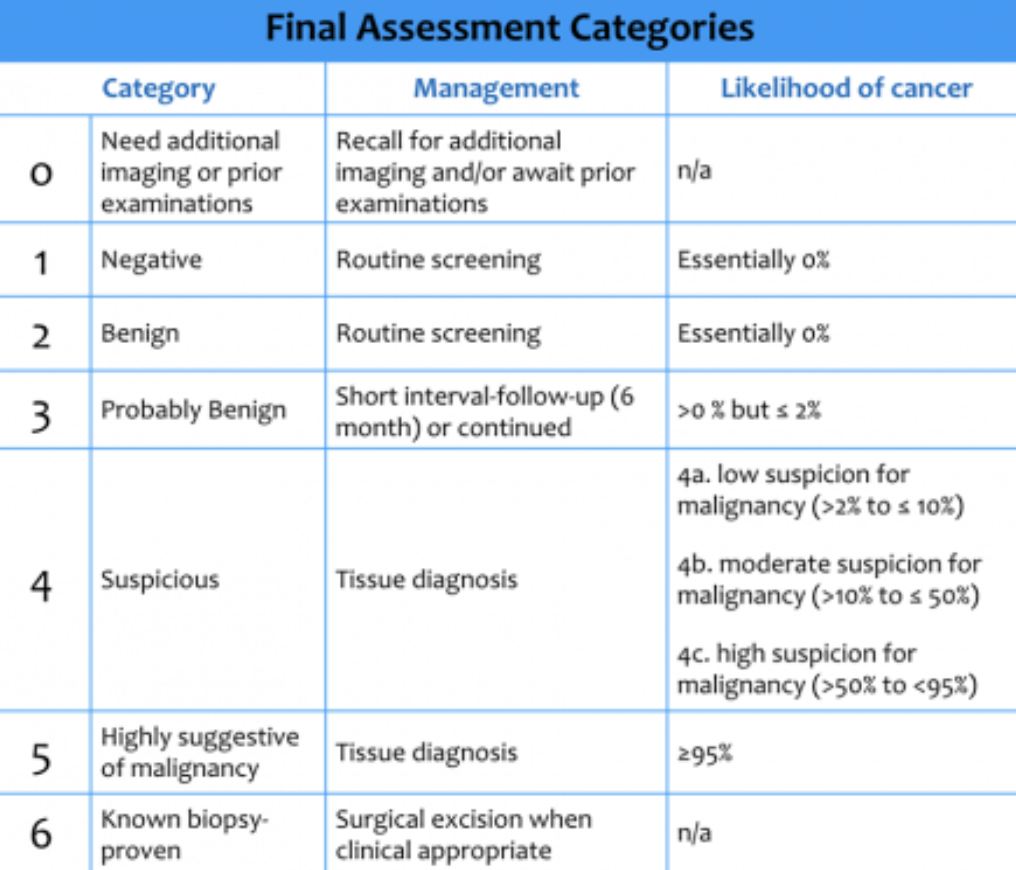Wound Healing
When a wound is created, the healing process begins. Recall from way-back-when in medical school that wound healing is divided into four stages:
Hemostasis: Platelets begin to stick to the injured site, and forms a fibrin clot, which plugs more platelets together to stop bleeding.
Inflammation: Damaged and dead cells get cleared out by phagocytic white blood cells. Platelet-derived growth factors recruit proliferative cells to the area in anticipation to begin healing.
Proliferative: angiogenesis and collagen deposition start this phase off. Fibroblasts provide a new extracellular matrix, excreting collagen. Epithelial cells also begin to re-epithelialize the top of the wound, closing it over and forming granulation tissue. Wound contraction occurs last, with myofibroblasts bringing the wound together and getting additional strength.
Maturation/Remodeling: in this phase, the fine-tuning occurs, where collagen is redistributed along tension lines.
Wounds ultimately will regain only 80% of their tensile strength back over time, compared to undamaged tissue. This process starts quickly, with reepithelialization beginning within the first 24 hours of wound formation. However, wounds that are poorly reapproximated may have slower reepithelialization, potentially allowing for further injury and slower wound healing overall. Thus, reapproximation of wounds with suture can help promote healing and reduce scar formation.
Suture We will review suture by material, and use Ethicon and Covidien brand names to refer to these suture types. When referring to statistics on strength and absorption, we’ll refer to published statistics by Ethicon brand products.
History
Suture has been around in some form or another for a long time!
The first use of surgical suture was described back in approximately 3000 BC by ancient Egyptians, and was also described separately by Mesopotamian/Indian peoples in approximately 500 BC.
Sutures were devised from a variety of materials, including plant fibers, silk, or animal materials such as tendons, arteries, or muscle strips.
Catgut suture, akin to violin strings or tennis racquets, was described by Galen in about 200 AD.
Sterilization of suture wasn’t thought about or even partially achieved until Joseph Lister introduced chromic catgut in the 1860s. True sterilization wasn’t achieved until the early 1900s.
By the mid 1950s-1960s, synthetic materials from polyester were developed, and most of our commonly used sutures were developed since that time.
Suture Vocabulary
It’s important to be familiar with the vocabulary of suture traits in order to facilitate comparisons, and to be able to ask for the appropriate suture during surgery.
Braided/Multifilament - these suture types are constructed using multiple strands of the material, like a rope.
Monofilament - these suture types are constructed using a single strand of the material, like a wire.
Gauge - this refers to the circumferential thickness of the suture. The higher the number, the thicker the suture. For instance, a 1 Monocryl is thicker than a 0 Monocryl. When comparing the zeros, the less zeros there are, the thicker the suture; i.e., a 2-0 is thicker than a 4-0.
Memory - the ability of a suture material to return to its previous shape after deformation. Generally memory is greater in monofilament than braided sutures.
Barbed - a new surgical technology, these sutures have small barbs in them, which allow for more even distribution of tension across a closed wound, and also afford the advantage that knots are not needed for the suture to be held in place. These sutures are gaining in popularity, though there’s limited (but rapidly growing!) data regarding their use in OB/GYN.
Beyond the gauge, sutures are mainly characterized by their materials. It would be too much to review every suture material that is available, so we’ll spend time on the few we use more routinely. They are generally divided into two categories of material: natural or synthetic. Sutures are also classified into absorbable and non-absorbable categories. Now let’s move on to the materials:
Natural, Absorbable
Natural Gut / Catgut
Chromic Gut
Derived from bovine or sheep intestine. Chromic gut is further “tanned” with a layer of chromium salt. One of the oldest forms of surgical suture in use.
Monofilament
Absorption time: 70 days (plain); 90 days (chromic)
Strength retention: 7-10 days (plain); 21-28 days (chromic)
Applications: can be used for soft tissue reapproximation. In OB/GYN, these are less commonly used, though chromic may still be seen for some uses during cesarean and vaginal laceration or episiotomy repair.
Advantages: well studied, and chromic gut in particular has a long history of safety in obstetrics, particularly with vaginal laceration repair.
Disadvantages: has fallen out of favor primarily because, as an animal protein, has unpredictable strength retention and inflammatory reaction. The absorption times are in part due to immune reaction to the suture. These sutures also have been banned from use in some areas of the world due to concern for contracting bovine spongiform encephalopathy (‘mad cow disease’).
Synthetic, Absorbable
Polyglyactin (E: Vicryl / C: Polysorb)
Braided
Absorption time: 56 - 70 days
Strength retention: 50% at 21 days
Applications: generally used for soft tissue reapproximation -- in OB/GYN, wide variety of applications. Is very popular for uterine closure of hysterotomy, vaginal cuff, and is appropriate for fascia and skin closure as well.
Advantages: very versatile suture which can be used for a variety of applications. Braided nature makes this suture soft and easy to handle. Knot tying is much easier and can be more secure. A “rapid-absorbing” form is available as well which is ideal for things such as vaginal laceration repair while affording the advantage of less tissue inflammation than chromic gut.
Disadvantages: braided nature can make this suture less advantageous in very thin or fine tissue, where it may “saw through” the tissue due to high friction. Has more tissue reactivity than monofilament synthetic sutures and may cause more irritation on skin. The braided nature theoretically gives bacteria more surface area to potentially adhere and cause infection. They also may increase bacterial harboring by “capillary action,” where the braided material absorbs and holds onto fluid that serves as a good growth medium.
Polyglecaparone (E: Monocryl)
Glycomer (C: Biosyn)
Monofilament
Absorption time: 91-119 days
Strength retention: 50-60% at 7 days
Applications: also for soft tissue reapproximation, and again with a wide variety of applications in OB/GYN. Almost anywhere you can use Vicryl, you could use Monocryl as well, with the exception of fascial closure.
Advantages: Monofilament nature makes this tissue very smooth to handle through tissue and also doesn’t provide the bacterial harbor that braided suture does. Additionally has long absorption time.
Disadvanages: Loses strength quickly, so not ideal for areas with high tension that may need additional strength, such as fascia. Handling can be difficult as the material is smooth, and knot tying may be more difficult. Can break easily.
Polydioxanone (E: PDS)
Monofilament
Absorption time: 182-238 days
Strength retention: 60% at 6 weeks (size 3-0 and larger)
Applications: soft tissue closure, but in OB/GYN, probably most commonly used for fascia closure.
Advantages: Particularly good tensile strength and absorption time make this an ideal choice for incisions under tension (again, fascia) or with closure of infected wounds (think after debriding then closing fascia).
Disadvantages: Very stiff monofilament, so handling can be difficult and setting square knots can be challenging. Can also break easily with tying. May extrude through wound over time so shouldn’t be used for skin closure (at least at gauges used by OBGYNs).
Natural, Non-Absorbable
We don’t use many of these sutures for OB/GYN applications, so we’ll skip over these. You may encounter silk sutures from time-to-time, which are in this category.
Synthetic, Non-Absorbable
Polypropylene (E: Prolene / C: SurgiPro)
Monofilament
Applications: can be used for soft-tissue reapproximation. In OB/GYN, not commonly used, as most commonly chosen materials are absorbable. That said, may still see this occasionally as a fascial closure suture or some may choose this for cerclage.
Nylon (E: Ethilon / C: multiple varieties)
Polyester (E: Mersilene / C: Ti-Cron)
Can be monofilament or braided
Applications: may be used for some skin closures, but in obstetrics most commonly used as a choice for cerclage placement.
Nylon may lose some tensile strength over time, while other synthetic non-absorbables like Polypropylene and Polyester maintain strength indefinitely.
Needles
Needles end up being a little simpler than suture, but there are still a lot of things to know!
Broadly speaking, there are two types of needles: tapered and cutting.
Tapered Needles
These needles have a round body, and tapered but blunt point. There are no cutting edges, so these needles move through tissue and then the tissue collapses around the suture material. It separates tissue rather than cutting it. These needles are often used for soft tissue repair, and not used for tougher areas like skin. Common needles types used by OB-GYNs include CT needles (circle-tapered); SH needles (small half-circle); and potentially TP needles (trigger point).
Cutting Needles
On the other hand, cutting needles actually cut the tissue. They come in two flavors. Regular cutting needles have their cutting edges on the inside needle curvature. Reverse cutting needles have their cutting edges on the outside needle curvature. Common needle types used by OB-GYNs include PS (plastic surgery) or FS (for skin).


